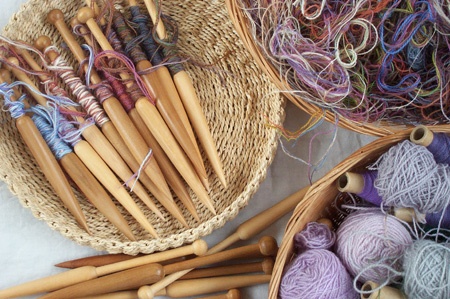About Tapestry

Tools and materials used in tapestry
What is tapestry?
The term 'tapestry' can cause some confusion. The dictionary definition is not very specific, simply saying 'worked cloth, woven, embroidered or embellished to hang on walls' which could be almost any textile, handmade or otherwise. It is also rather unhelpful that in common English usage, the word tapestry has an extremely elastic set of meanings, most of them having nothing to do with weaving. Scandinavian languages have a much more precise technical term for tapestry, the direct translation is 'picture weaving' - as opposed to cloth weaving or rug weaving - and that is exactly what tapestry is - a unique work of art that is realised in a particular woven textile technique.
Tapestry is a very simple system of weaving that requires little in the way of sophisticated equipment. Although you can learn the basic techniques in a couple of days, it requires dedication and time to weave well. In tapestry studios until very recently it took seven years to complete an apprenticeship and a further three to five years to achieve the ‘Master Weaver’ status that would allow you to be in charge of a project. Until relatively recently, weavers were almost exclusively male, the first female permitted to weave at the Dovecot Studios in Edinburgh for example, was Maureen Hodge in the mid 1960’s.
